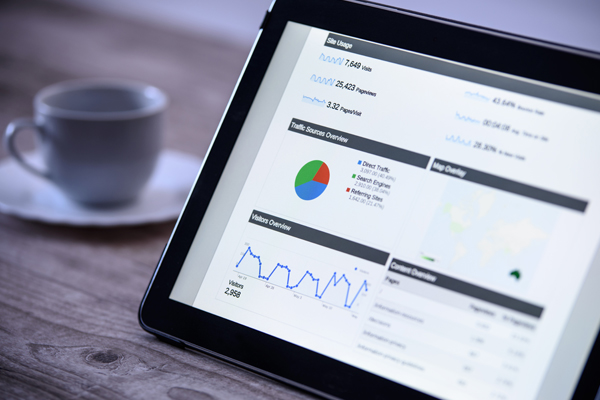
Website Analysis, Why does it matter?
Interested in knowing the popularity of information on your website or blog pages? Want to know why people add products to the shopping cart on your website but do not finish their sale? Then you need to learn the basics of Website Analysis.
Unfortunately, a general instruction guide for an optimised website does not exist. So, how can you measure and test if your website is working well for your web visitors?
Google Analytics
That is where Google Analytics comes in handy. It is a free website analysis and traffic measurement tool. Using this website analysis tool on a regular basis will help you improve your website based on real data. There is no guesswork needed. And you will be able to discover your website strengths and correct blind spots.
Benefits Google Analytics
A website analysis with Google Analytics will give you the following benefits. You can find out:
- Popular content: what content visitors like on your website.
- Time spend: where visitors stay the longest on your website.
- Strengths & Weaknesses: the web´s strengths and weaknesses.
- Improvements: what actions will improve your website.
Even a simple website analysis, will show you a wealth of useful information.
Set up Google Analytics
How to setup Google Analytics on your website?
Follow these three steps to setup Google Analytics:
- Step 1: Sign up for Google Analytics.Insert basic information about what website you would like to track. And verify your Google Analytics account by mail.
- Step 2: Add tracking code. After confirmation, you will receive a tracking code to paste onto your website. To add the tracking code and to enable the website statistics:
- Upload the tracking code on your system.
- Use Google´s webmaster tool to manage your site.
- Step 3: Learn about your website audience.A few hours after setup and property verification, you will be able to see data coming in from your website.
Get started
Time to get started. But where to start?
- Step 1: Learn the basics
- First, become familiar with the Google Analytics Interface.
With Google Analytics you can:
- Navigate through Google Analytics.
- Understand overview reports.
- Understand full reports.
- Share reports.
- Set up dashboards and shortcuts.
- Step 2: Continue LearningAfter that, continue learning in one of the following ways:
- Use the Google Analytics Help function.
- Check the Google Analytics learning videos.
- Follow the free Google Analytics for Beginners course.
- Try the Google Analytics Demo Account.
Set up Google Analytics Campaign
Now you are ready to set up your first Google Analytics Campaign. To be able to track your website statistics, take the following steps:
- Step 1: Mark internal visits with filters. First. Select your report data with filters. Set up basic reporting for your audience, acquisition and user behaviour reports. Without proper filtering, your web statistics will count all visitors. Both inside and outside your business. Add a filter to exclude your internal visitors, such as business employees. In this way, you prevent biased results.
- Step 2: Enable demographic and interest reports. Second. Enable demographic and interest reports. This will give you a greater insight in the people, that visit your website.
- Step 3: Set up your business goals. Third. Set up specific business objectives first. Why do you need the Google Analytics Campaign? Which business goal would you like to reach?
- Information: How many visitors need to fill in details on the contact form? Subscription: How many visitors need to subscribe to newsletters?
- Sales: How many sales you want to achieve as an online purchase?Step 4: Set up conversion tracking. Set up conversion tracking to check the success or failure of your campaigns. Track campaign with a URL Builder.
- Step 5: Run Google Analytics Campaign. Decide for which timeframe you want to run your Google Analytics Campaign.
- Step 6: Measure Customer Campaigns. Do not forget to measure the campaign before, during and after campaign time. In this way, you can continue optimising your website on the go. And get to know which improvements you need to create a successful campaign.